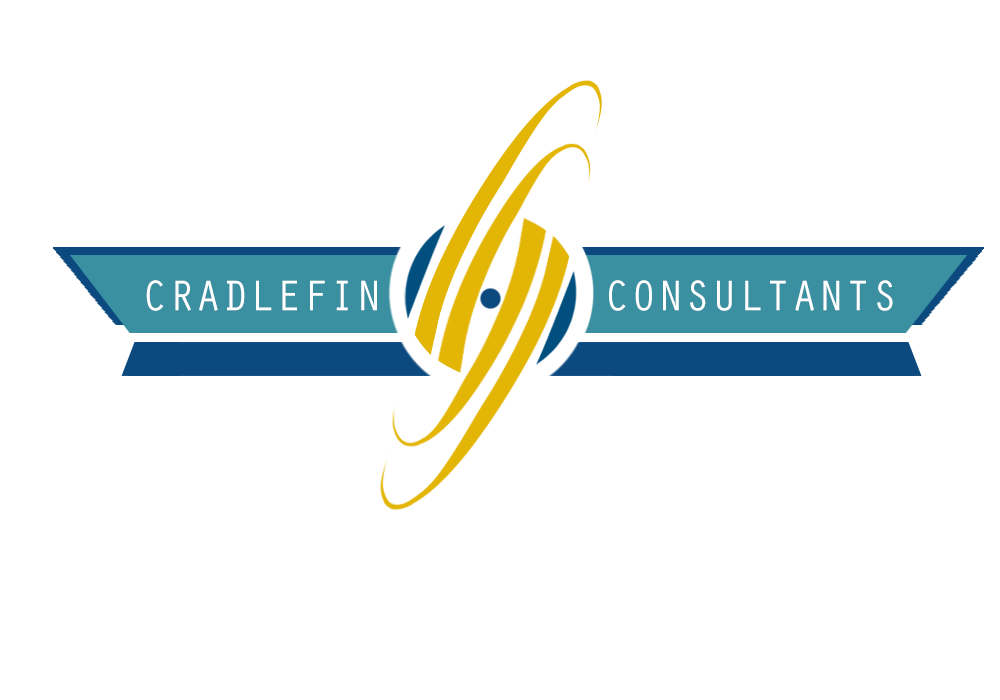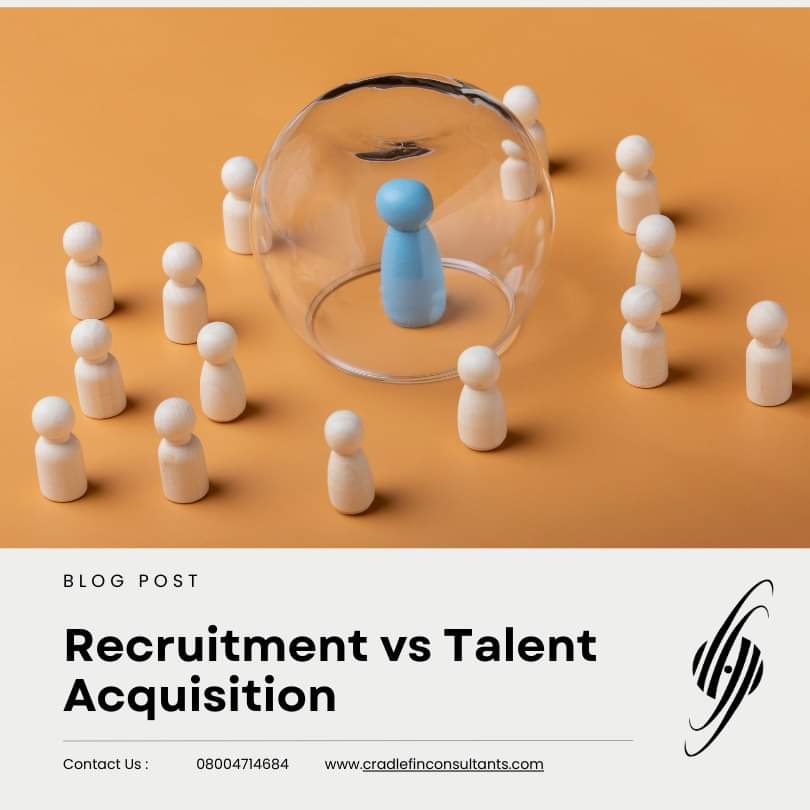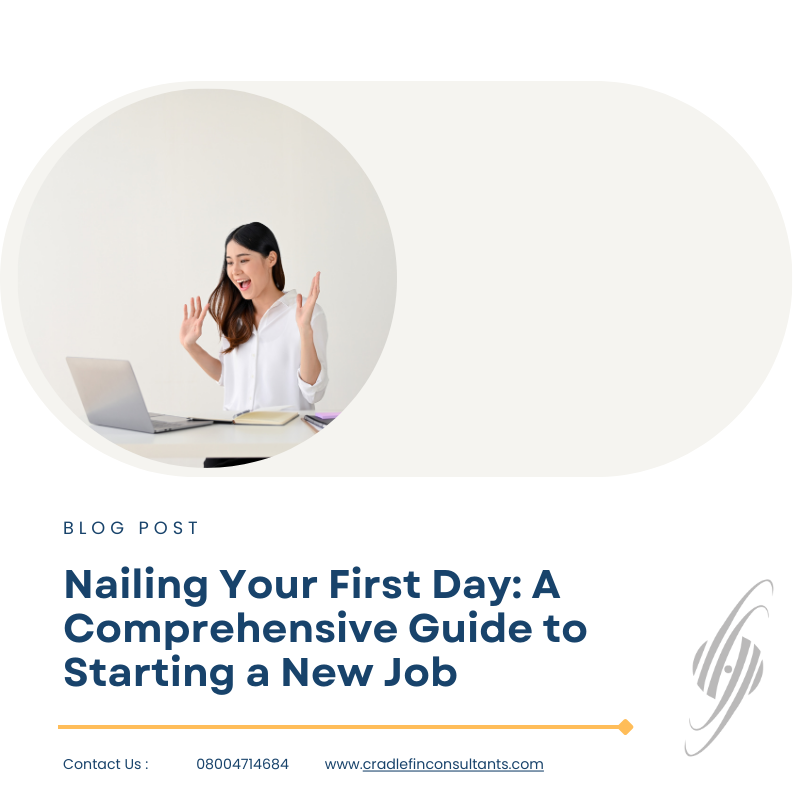Recruitment and talent acquisition are vital components of any organisation’s workforce strategy, yet the distinction between the two is often blurred. Understanding the nuances between recruitment and talent acquisition is crucial for businesses looking to attract and retain top talent in today’s competitive job market. In this article, Cradlefin Consultants will delve into the definitions and key differences between recruitment and talent acquisition, explore the various processes involved in each, discuss the importance of employer branding, highlight the role of technology in modern recruitment practises, and emphasise the significance of metrics and measurement in evaluating recruitment success. Additionally, we will address strategies for building a successful recruitment and talent acquisition team to drive organisational growth and success.
1. Definition and Key Differences
1.1 Understanding Recruitment: Recruitment is like speed dating for hiring – it’s all about finding someone to fill a specific role quickly. The focus is on matching candidates to job requirements.
1.2 Defining Talent Acquisition: Talent acquisition is like a carefully curated wine collection – it’s about attracting, nurturing, and retaining top talent for the long haul. It’s a strategic approach to workforce planning.
2. Recruitment Process Overview
2.1 Job Analysis and Planning: This is where the hiring magic begins. Employers figure out what they need in a candidate, like a detective, solving a job description mystery.
2.2 Sourcing and Attracting Candidates: Time to cast the net wide! Employers use job boards, social media, and even carrier pigeons to find potential hires. It’s a bit like fishing, but with resumes instead of bait.
2.3 Screening and Selection: Once the applications flood in, it’s time to separate the wheat from the chaff. Employers review resumes, conduct interviews, and maybe even administer a quiz or two to find the perfect fit.
3. Talent Acquisition Strategy
3.1 Aligning with Business Goals: Think of this step as matchmaking on steroids. Employers align their talent acquisition strategy with the company’s big-picture objectives to ensure a harmonious fit.
3.2 Building Talent Pipelines: Talent pipelines are like the VIP list for potential hires. Employers cultivate relationships with top talent even before a position opens up, making future hires a breeze.
4. Importance of Employer Branding
Employer branding is like a company’s Instagram profile – it’s the first thing potential hires cheque out. A strong employer brand attracts top talent like bees to honey, making recruitment and talent acquisition a walk in the park.
5. Role of Technology in Recruitment and Talent Acquisition
In today’s fast-paced world, technology plays a crucial role in both recruitment and talent acquisition. It helps streamline the hiring process, making it more efficient and effective. Let’s take a look at two key technologies that are transforming the way companies attract and retain top talent.
5.1 Applicant Tracking Systems: Applicant Tracking Systems (ATS) are like the fairy godmothers of recruitment – they help keep everything organised and make the hiring process smoother. These systems allow recruiters to track applications, manage candidate communication, and collaborate with team members seamlessly. With an ATS in place, recruiters can spend less time sifting through resumes and more time engaging with potential hires.
5.2 Recruitment Marketing Tools: Recruitment Marketing Tools are the cool kids on the block, bringing creativity and strategy to the hiring game. These tools help companies showcase their employer brand, attract passive candidates, and create engaging job postings. By leveraging social media, content marketing, and targeted advertising, recruiters can reach a wider pool of talent and stand out in a crowded job market.
6. Metrics and Measurement in Recruiting
When it comes to recruiting, numbers don’t lie. Metrics and measurement are essential for understanding what’s working, what’s not, and how to improve the hiring process. Let’s dive into two key aspects of measuring recruitment success.
6.1 Key Performance Indicators: Key Performance Indicators (KPIs) are like the compass that guides recruiters in the right direction. These metrics, such as time to fill, cost per hire, and quality of hire, help recruiters evaluate their performance and make data-driven decisions. By setting clear KPIs, recruiters can track their progress and adjust their strategies as needed.
6.2 Analysing Recruitment Data: Data analysis may sound intimidating, but it’s a powerful tool for recruiters looking to level up their game. By analysing recruitment data, recruiters can identify trends, spot bottlenecks in the hiring process, and make informed decisions. Whether it’s tracking candidate sources or measuring candidate experience, analysing data can provide valuable insights that drive recruitment success.
7. Building a Successful Recruitment and Talent Acquisition Team
Just like assembling the Avengers, building a successful recruitment and talent acquisition team requires the right mix of skills, personalities, and superpowers. Here are a few tips for creating a dream team that can take on any hiring challenge.
In conclusion, recognising the distinct functions of recruitment and talent acquisition and implementing effective strategies in each area can significantly impact an organisation’s ability to attract and retain top talent. By prioritising employer branding, leveraging technology, analysing recruitment metrics, and building a strong recruitment and talent acquisition team, businesses can enhance their competitive edge in the talent marketplace. Embracing these practises will not only streamline the hiring process but also contribute to long-term organisational success and growth.
Contact the team at Cradlefin Consultants for all your staffing requirements. Whether you are looking for temporary, permanent, or contract staffing solutions, our team of experts has the experience and knowledge to find the perfect fit for your organisation. Our recruitment process is tailored to fit your unique needs, ensuring that we provide you with the best candidates who possess the necessary skills and expertise to excel in their roles. We have a vast network of highly qualified professionals, and we use cutting-edge technology to source and screen candidates, making the recruitment process efficient and time-saving for you.





